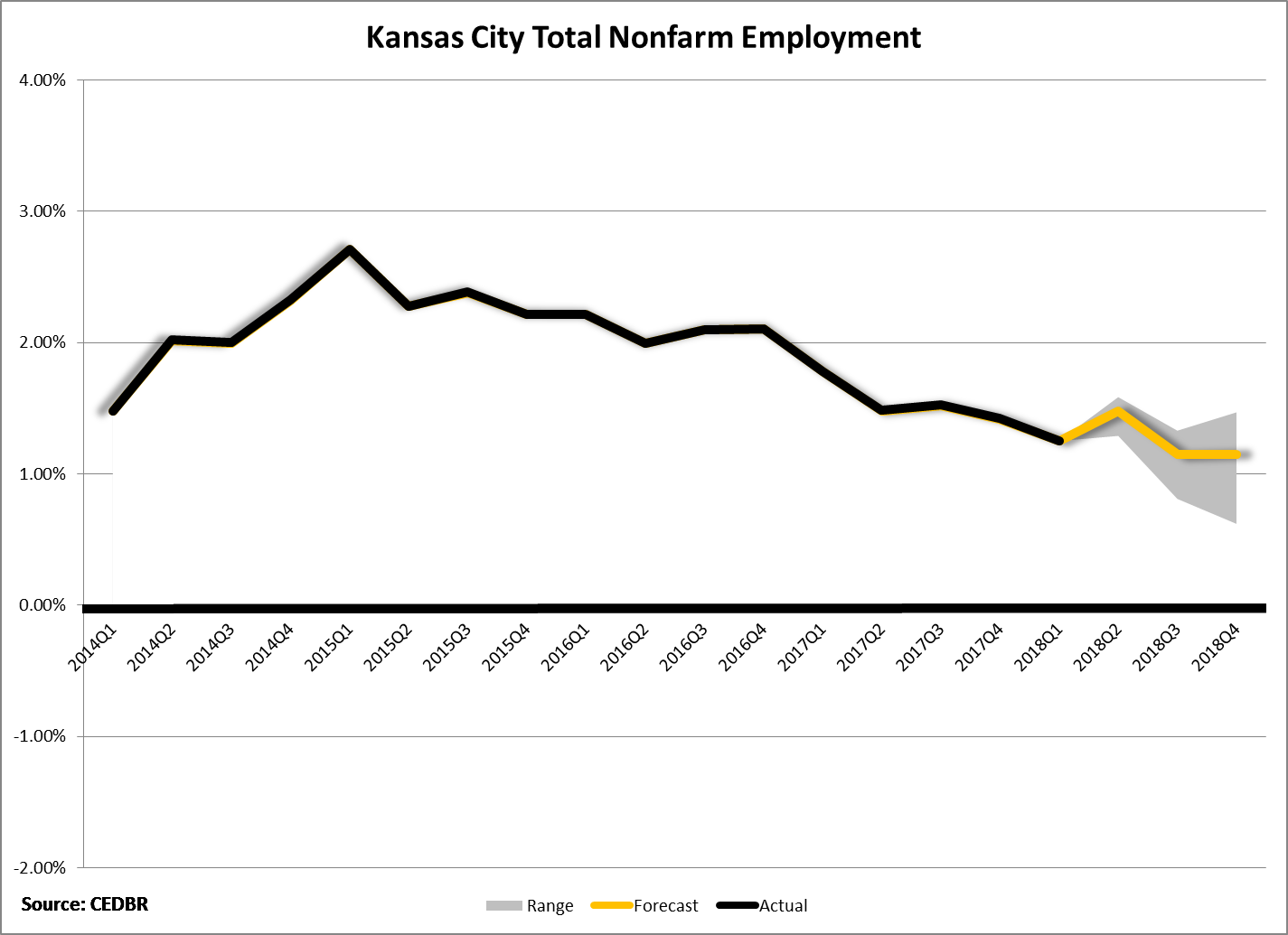Kansas City Employment Forecast
Released October 4, 2018 (See previous version.)
Total nonfarm employment in the Kansas City, MO-KS, metropolitan area* grew by 1.6 percent in 2017, adding more than 16,500 new workers to bring the employed workforce in the area to 1.08 million employees. This follows several years of strong employment growth for the metropolitan area, which has averaged 18,200 new jobs each year from 2012 to 2017. Over that time Kansas City’s overall employment has grown more quickly than both the Missouri and Kansas state averages. Unemployment declined to 3.8 percent of the Kansas City labor force in 2017, a drop of 0.5 percentage points from 2016.
Growth is projected to accelerate slightly in 2018 for Kansas City, with almost 18,500 new jobs added. In 2019, Kansas City is forecast to create more than 15,000 new jobs, with employment growing by 1.4 percent.
- The production sectors are projected to grow 1.2 percent in 2019, a modest increase from the 0.9 percent growth from 2017. The natural resources and construction sector is projected to lead growth, expanding 3.5 percent and adding more than 1,800 jobs in 2019. Since 2012, the sector has led growth in the production sector with annual growth ranging from 3.4 to 6 percent in that time. The manufacturing sector is forecast to continue to experience job losses in 2019, following a decline of more than 500 workers in 2017. The sector is projected to decline by approximately 300 jobs in 2019, a 0.4 percent contraction.
- The trade, transportation and utlities sector is expected to expand 1.1 percent with the addition of almost 2,400 new workers in 2019. The wholesale trade sector and the transportation and utiltites sectors are projected to be the fastest growing, while growth in the retail trade sector remains a little more sluggish. Retail trade employment is expected to grow more quickly in 2019 than in 2017. Taxable retail sales in the Kansas City area are also expected to increase on an inflation-adjusted basis.
- Employment growth is projected to be fastest in the service sector in 2019, which is forecast to add more than 10,500 jobs as it expands 1.7 percent. Since 2011, service sector growth in the Kansas City area has consistently ranged between 1.5 and 2.7 percent, with growth of 1.6 percent in 2017.
Growth in services in recent years has primarily been driven by growth in the professional and business services subsector and the education and health services sector, which have added a combined average of new 8,500 workers annually to the Kansas City economy from 2010 to 2017.The only service subsector to lose jobs over that period was the information services subsector, which has declined by more than 10,000 workers since 2010 in the Kansas City area.
- Government sector employment is forecast to increase by 1 percent in 2019, adding more than 1,600 new jobs. Local government is projected to add more than 1,400 of those jobs, while state and federal government employment is forecast to increase by less than 100 workers each in the area.
* The Kansas City, MO-KS, metropolitan area includes Bates, Caldwell, Cass, Clay, Clinton, Jackson, Lafayette, Platte and Ray counties in Missouri and Johnson, Leavenworth, Linn, Miami, and Wyandotte counties in Kansas.
| DOWNLOAD PDF VERSION |









